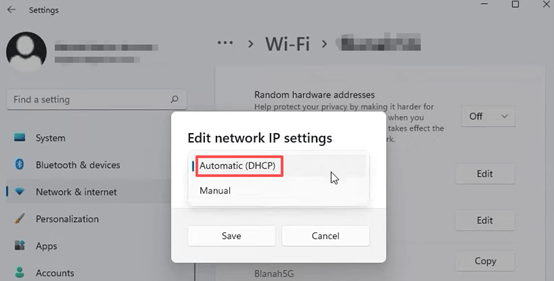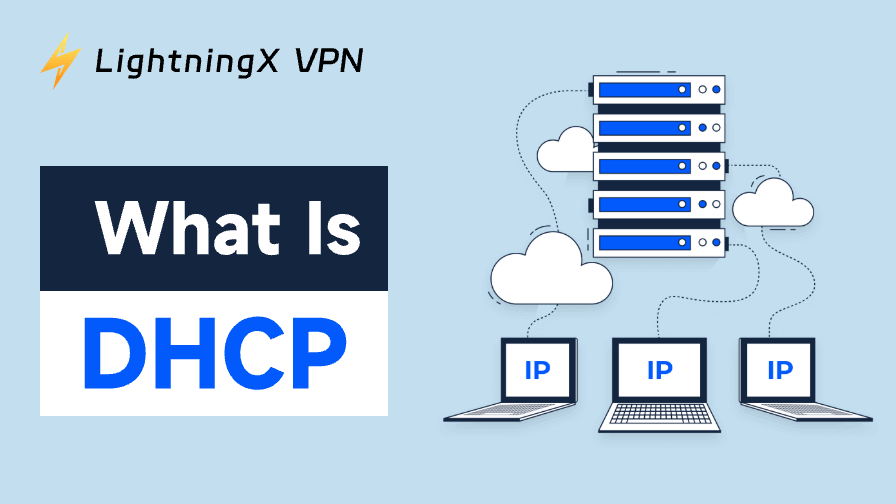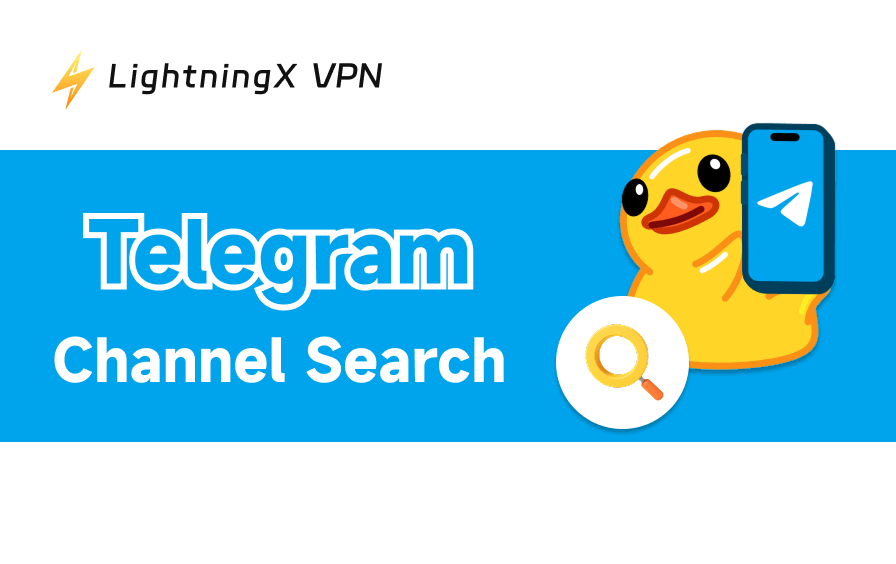What is DHCP? Its primary function is to give devices IP addresses automatically so they can join networks without the need for manual setup. This post covers what DHCP is, its significance, and the main problems in a beginner-friendly way.
What Is DHCP?
Actually, DHCP(Dynamic Host Configuration Protocol) is a protocol that assigns IP addresses automatically. To communicate, each device on a network needs a distinct IP address. Without DHCP, you would need to manually configure every device.
This would be feasible in a home network, but manual assignment would be impossible and prone to errors in a large corporation or office with hundreds of devices.
In addition to allocating IP addresses, DHCP can also supply other data, including DNS servers, subnet masks, and default gateways. As a result, devices can connect to the network and the internet with ease.
The majority of gadgets, including computers, cell phones, printers, and smart TVs, rely on DHCP to operate without human intervention.
Related: How to Fix “This Network Is Blocking Encrypted DNS Traffic”?
Key Components of DHCP
DHCP relies on several important elements:
- DHCP Server: Assigns IP addresses. Usually part of a router or dedicated server.
- DHCP Client: The device that needs an IP address.
- IP Pool: A range of addresses available for assignment.
- Lease Time: The duration for which an IP address remains valid before it needs to be renewed.
Benefits of DHCP
Here are the main advantages:
- Efficiency: Quick setup for any device.
- Reliability: Reduces conflicts and duplicate addresses.
- Flexibility: Works with different networks and device types.
- Cost-effective: No need for complex manual management.
Why Do We Need DHCP?
Networks are growing. In homes, you may have dozens of connected devices. Offices often have hundreds. Assigning IP addresses manually would be nearly impossible.
Here’s why DHCP is important:
- Saves time: No manual configuration needed.
- Reduces errors: Prevents IP conflicts and typos.
- Central control: The server manages all IP assignments.
- Scales easily: Works well even with thousands of devices.
How Does DHCP Work?
Having covered what DHCP is, we will move forward to how it works. The DHCP process follows a simple four-step cycle often remembered as DORA:
- Discover: A device requests an IP address when it joins the network.
- Offer: The DHCP server responds with an available IP address.
- Request: The device accepts the offered IP address.
- Acknowledge: The server confirms the assignment and provides network details.
This process happens in seconds and is completely automated. IP addresses are assigned with a lease time, meaning the device keeps the same IP for a limited period before it must request a renewal or a new address.
This system makes DHCP highly flexible and efficient for networks where devices frequently join or leave.
DHCP vs Static IP
Static IP addresses are explicitly configured and are fixed, whereas DHCP manages automatic assignment.
For servers, printers, or other devices that require constant access, static IP addresses are helpful. For everyday devices, dynamic IP addresses assigned via DHCP are ideal since they ease management and minimize configuration problems.
The requirements of the network determine whether to use a static or dynamic approach. Dynamic IPs are adequate for the majority of home networks. While DHCP controls the majority of user devices in business settings, static IPs may be used for reliable, essential infrastructure.
Further Reading: Static IP vs. Dynamic IP Address: Differences Explained
DHCP in Modern Networks
Both IPv4 and IPv6 networks make use of DHCP. IPv6 DHCP can offer other configuration choices, like DNS servers and network prefixes, while IPv4 DHCP primarily manages IP addresses.
DHCP is essential to modern networks due to its effectiveness, adaptability, and scalability. DHCP is still the most often used technique for automatic network configuration.
Practically speaking, most users are unaware of DHCP. When you plug a laptop into a corporate network, connect a smartphone at home, or log into office Wi-Fi, DHCP silently makes sure the device has all the data it needs to connect and access the internet.

DHCP and IPv6
IPv6, a more recent IP system created to accommodate the increasing number of connected devices, is compatible with DHCP. With 128-bit addresses, IPv6 offers a far bigger pool than IPv4. In addition to allocating IP addresses, DHCPv6 can offer DNS servers, domain search lists, and more network configurations.
For alternative setups, some devices even combine DHCPv6 with auto-generated addresses. This makes modern networks scalable and effective by guaranteeing that devices are configured appropriately without the need for human involvement.
Common Issues and Security Considerations
1. Operational Challenges
While DHCP is generally “set it and forget it,” three main issues can disrupt a network:
- IP Address Conflicts: These occur if address pools overlap or if a device “clings” to an old IP address that the server has already reassigned to a new device.
- Lease Expiration Issues: If a device cannot communicate with the server to renew its lease (due to congestion or server downtime), it may lose its network connection entirely once the lease expires.
- Single Point of Failure: If a central DHCP server fails and there is no redundancy, new devices cannot join the network, and existing devices will eventually drop off as their leases expire.
2. Security Vulnerabilities
The biggest threat to a DHCP environment is the Rogue DHCP Server. This is an unauthorized server introduced by an attacker to provide false network configurations to clients.
Potential Impacts:
- Man-in-the-Middle (MitM) Attacks: The rogue server sets itself as the “Default Gateway,” allowing attackers to intercept and inspect all outgoing traffic.
- DNS Redirection: Attackers can send users to fraudulent websites by providing a malicious DNS server address.
- Resource Exhaustion: An attacker can flood a server with fake requests (DHCP Starvation) to use up all available IP addresses, preventing legitimate users from connecting.
Tip: To enhance network privacy and security, using a reliable VPN can help protect your traffic from potential interception, especially when connecting to public or untrusted networks.
LightningX VPN can be a nice option for network privacy. It employs strong encryption algorithms like AES-256-GCM and ChaCha20-Poly1305. These ensure that data is not intercepted or deciphered during transmission.
Alternatives to DHCP
While DHCP is the most common method for assigning IP addresses, alternatives exist.
- Manual configuration gives full control, useful for servers or devices needing fixed addresses, but it’s time-consuming for large networks.
- Zeroconf (Zero Configuration Networking) lets devices assign themselves addresses and discover each other without a DHCP server, ideal for small or ad-hoc networks.
With its ability to automate IP assignment and support both IPv4 and IPv6 for the majority of household and corporate networks, DHCP continues to be the most dependable and scalable solution in spite of these alternatives.
Final Words
DHCP makes connecting devices fast, easy, and efficient. Whether at home or in business, it ensures your devices get online without hassle.
Hope this post helps you understand what DHCP is and how it works, and gives you a clearer view of the networks you use every day.





















